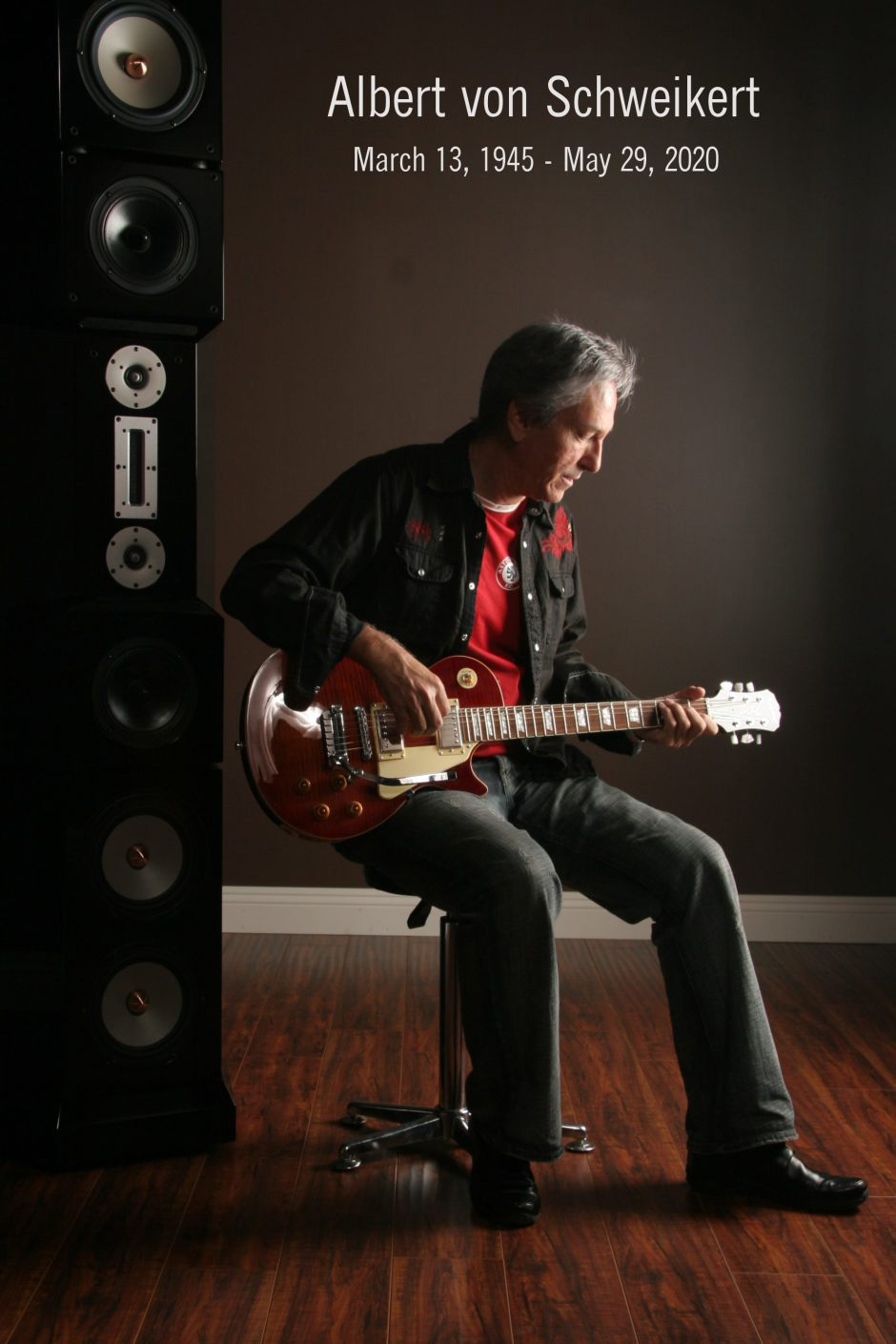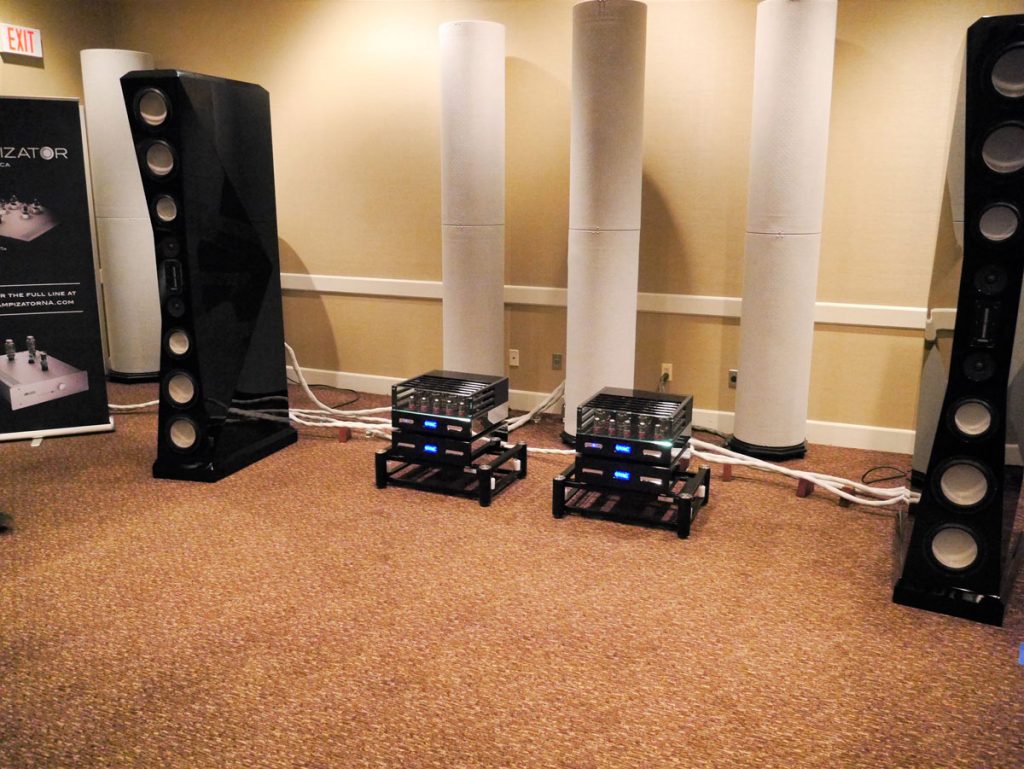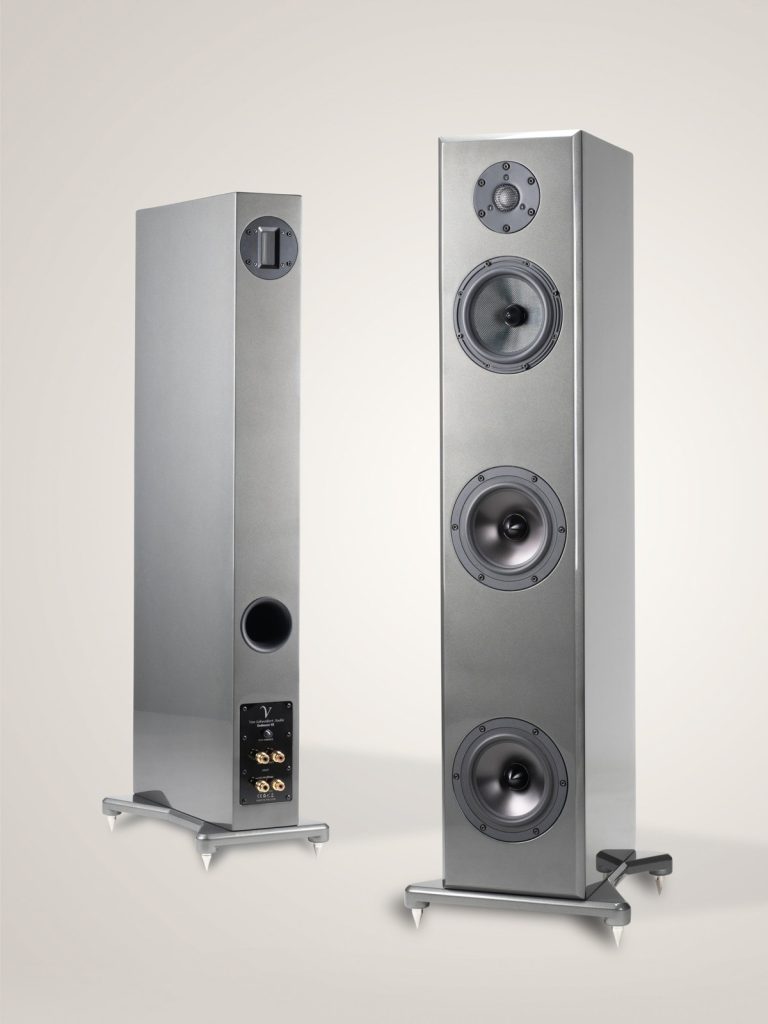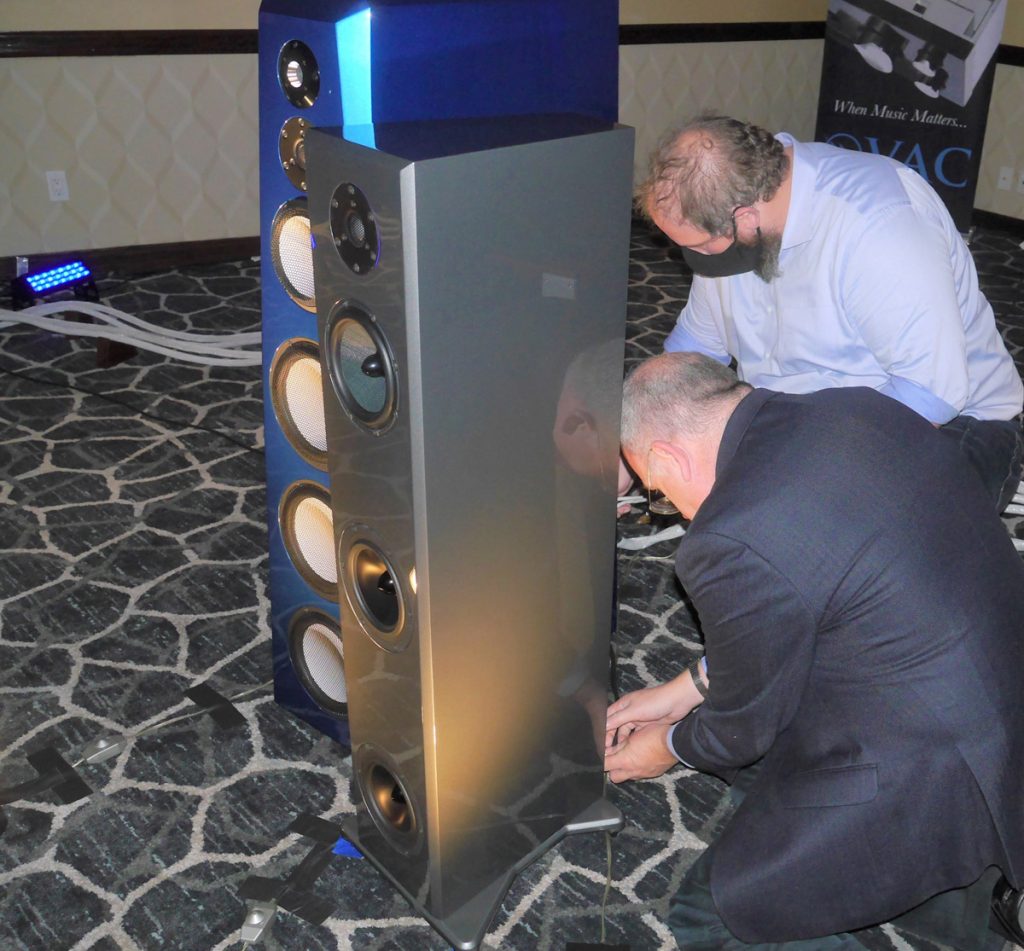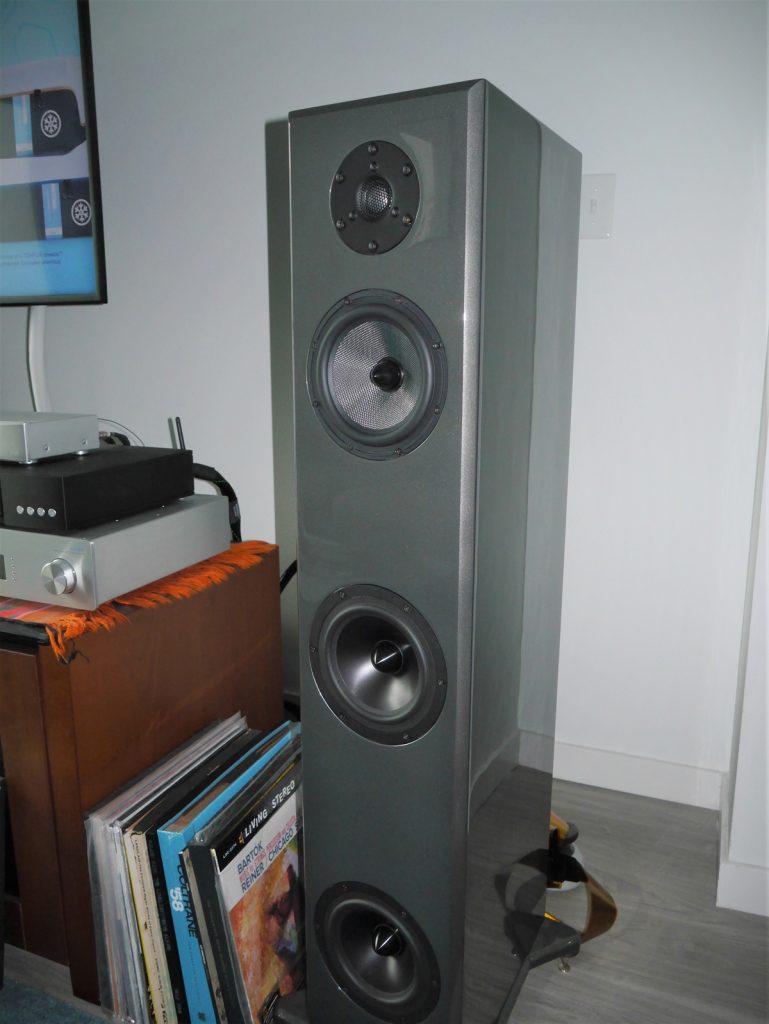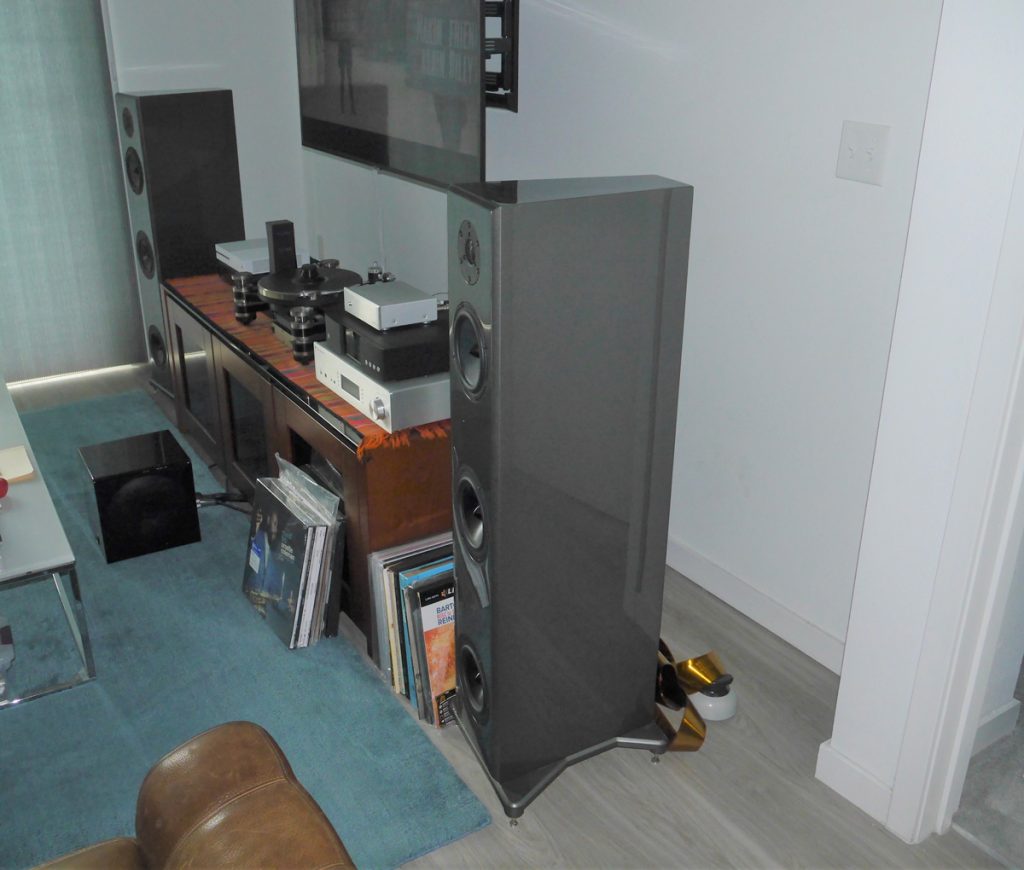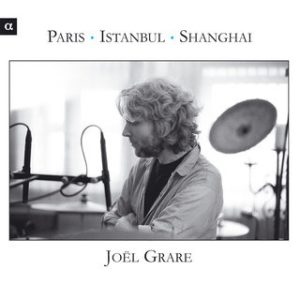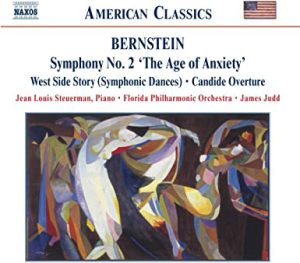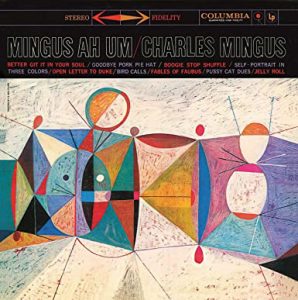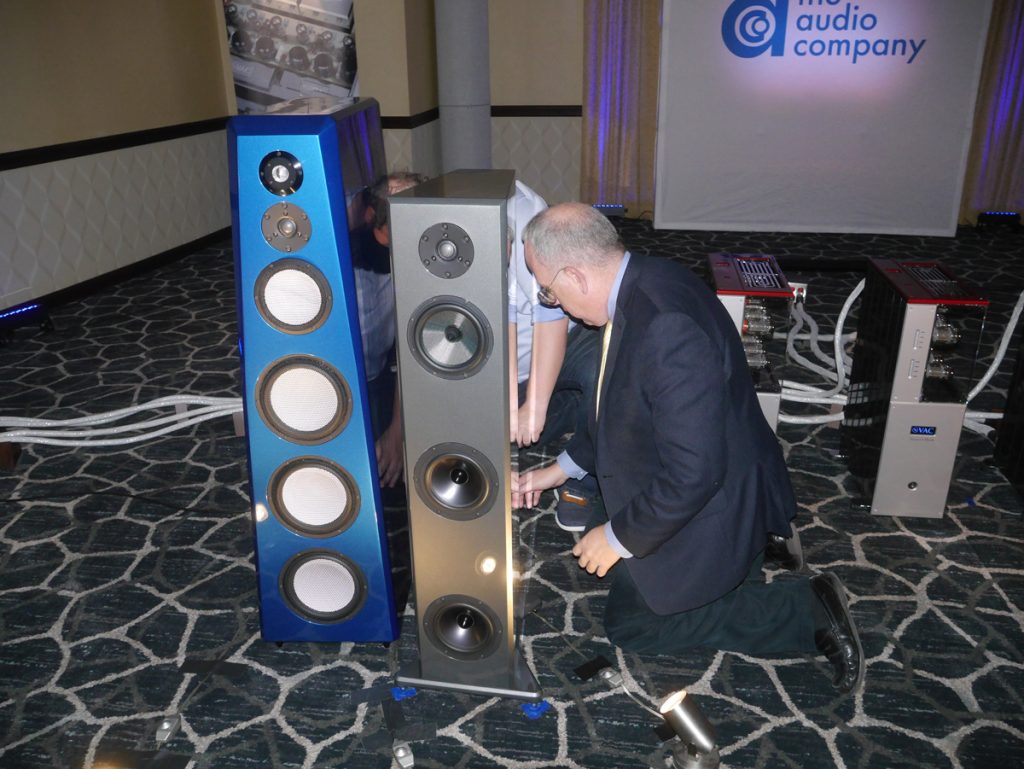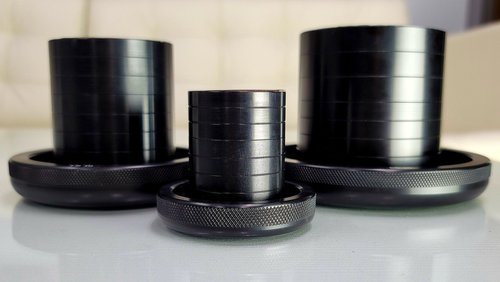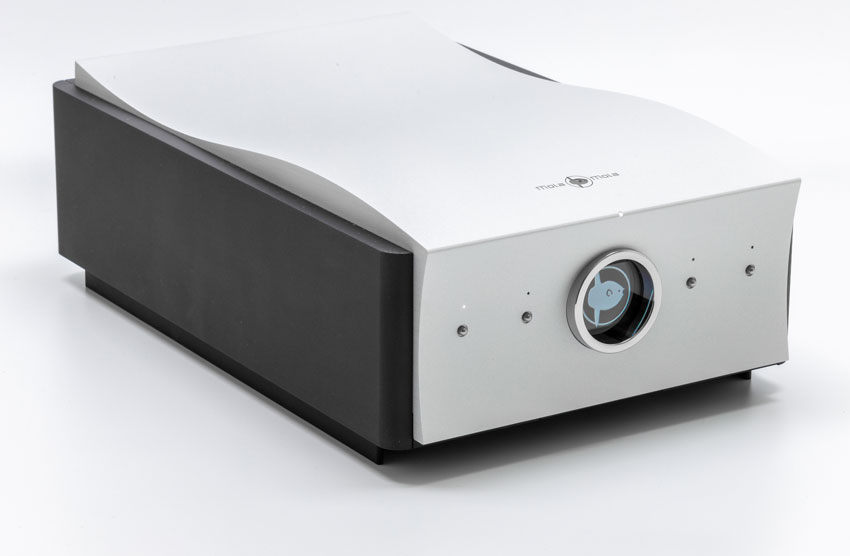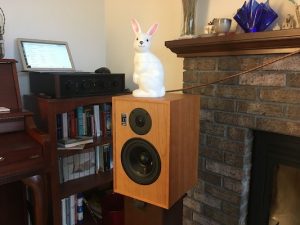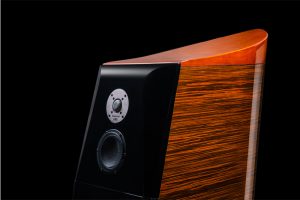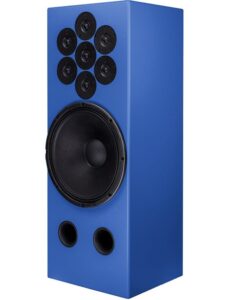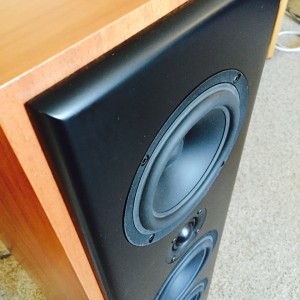Up and Down the Loudspeaker Evolutionary Ladder
From its inception nearly 40 years ago, Von Schweikert Audio has adhered fanatically to a unifying corpus of science-driven principles first championed by company founder and former chief engineer Albert Von Schweikert, sadly no longer with us. Albert's science-centered reimagining of modern loudspeaker design utilized applied psychoacoustic observations to explore, and better explain, how specific design choices influence what listeners hear in showrooms and household listening spaces. These psychoacoustic ruminations shaped AVS's unwavering insistence that good loudspeaker engineering treat crossover design and the minimization of phase, impedance, and hysteresis anomalies (about which more later), exceptional cabinet rigidity, and the mechanical time-alignment of the driver wavefronts as non-negotiables.
These core loudspeaker engineering values continue to drive the efforts of Albert's son and current firm head Damon Von Schweikert, along with Chief Design Officer Leif Swanson. As Damon and Leif have shared with me repeatedly, the canny use of proprietary crossovers, applied psychoacoustics, meticulous enclosure construction techniques, and where feasible, the mechanical time-alignment of the front driver wavefronts enable their speakers to work in rooms large and small.
VSA's first product, the now famous Vortex Screen floor stander (back in the day the company went by the name Vortex Acoustical Engineering), stood out for, you guessed it, Albert's use of a complex crossover topology meant to enhance midrange purity and minimize the nasty phase, impedance, and hysteresis bugaboos that compromise tonality, timing cues, and a given speaker's ability to image and soundstage realistically. For the technically inclined amongst you, please check out Robert Harley's well-written review of that seminal product for Stereophile HERE. This was Harley's first published review and led to his receiving an offer to join the Stereophile staff. It includes a detailed description of the Vortex Screen crossover architecture.
Apart from the crossover, the solid 95 lb. Vortex Screen cabinet, while not as non-resonant as the exceptionally quiet triple-wall laminate cabinets used in VSA's current speaker lineup, stood out for its weight and careful build to suppress resonant noise. Anecdotally, Damon shared with me in a recent phone call fond memories of trips taken with dad Albert to the National Lumber store in Whittier, California to secure the 4' x 8' MDF sheets used to construct the Vortex Screen cabinets. Back then, all Vortex screens were hand-built, a practice still very much part of the VSA manufacturing ethos.
In 2008, a talented young guitar-playing speaker designer named Leif Swanson approached AVS (also a guitarist) and son Damon in their design studio to show off a speaker that he and a close colleague recently completed. Impressed by the quality of construction and non-resonant cabinet, AVS agreed to take Leif under his wing. Not long thereafter, VSA introduced the VR-33 speaker ("VR" referring to Virtual Reality) that featured a non-resonant cabinet designed by the upstart Mr. Swanson. Leif remained with VSA building cabinets and learning as much about overall speaker design as AVS could impart until 2013, at which time and with Albert's blessing, he set out on his own under the Endeavor Audio banner.
Newly empowered to follow his own entrepreneurial muse, Leif released the enthusiastically received Endeavor E-3 and E-5 towers. Featuring svelte trapezoidal forms, rigid cabinets, advanced crossover networks, and more than a dose of AVS-influenced magic, these models offered high-style, great sound, and approachable price points at a time when high-end speaker prices tipped ever skyward. Leif's 2015 return to the company fold following the sale of Endeavor Audio to VSA signaled a new beginning of sorts, one that saw Albert yield the design and management front-line to Damon and Mr. Swanson upon his retirement that same year.
In 2017, Damon and Leif introduced a "shape of things to come" statement product, one that pointed the way forward for all future VSA designs: the aptly named VSA ULTRA 11. The ULTRA 11 represented (and still does) the firm's full-frontal assault on the loudspeaker state-of-the-art, one that challenges the best speakers from established players like Wilson, Magico, and YG Acoustics. This über-complex 14 driver per side, 850 pound, 7' 6" tall monolith looks for all intents and purposes like an otherworldly obelisk, albeit a gracefully proportioned and very attractive one, in my humble opinion. With a manufacturer-stated frequency response of 10 Hz to 100,000kHz (-3dB @ 16Hz and 40,000Hz) the U11 encapsulates just about everything that VSA knows about fine speaker design. Unfortunately, at a staggering cost of $365K the pair, ownership remains the exclusive domain of hedge fund managers, neurosurgeons, and music-loving oligarchs.
Trickle-Down Economics
The 2017 introduction of the ULTRA 11 (not to mention its almost as impressive "little" brother, the stellar ULTRA 9 soon thereafter) begged a serious question: where to go from up. The not so obvious answer pointed downward in the marketplace, to the almost budget-priced Endeavor E-3, now in Mk II guise. This trickle-down strategy pondered just how much of the ULTRA DNA Leif and Damon could tease out of a smaller, more conventional, not to mention considerably more affordable, platform. The answers they identified leveraged much of what the two learned bringing the massive ULTRA models to market but without the cost and risk associated with creating a "from the ground up" hatchling. Stated in simplest terms, the Endeavor Special Edition (ESE) starts with an existing speaker, the $10,000/pair Endeavor E-3 MkII, and downloads large doses of ULTRA technology to that platform.
How does VSA accomplish this impressive task? To start, the ESE inherits the superb beryllium tweeter used throughout the Virtual VR (for "virtual reality") and ULTRA line of flagship loudspeakers, plus a 3" version of the rear-firing ribbon super-tweeter found in the compact ULTRA 55 speaker, the current baby in the ULTRA family. VSA refers to the super tweeter as a "rear ambience retrieval driver," one that utilizes a Neodymium magnet system for low distortion and wide frequency-range, and which matches the lightening-quick transient response and tone of the beryllium front-mounted tweeter.
Why include a rear-firing aluminum ribbon super-tweeter in a speaker at this price-point when most dynamic driver-based competitors eschew this feature altogether? The answer lies in AVS's earlier "discovery that recording microphones encode the musical signal with their [own] overlaying pickup response patterns." The VSA homepage makes clear that AVS, "[a]fter making a series of recordings, using several different microphones" discovered that "the mics not only had tonal differences related to frequency response errors, but also created different types of imaging patterns".
This observation led to the revelation that "[t]he perception of depth and space was not only dependent on the recording environment and mic placement, but also on the mic's off-axis polar response. For this reason, (AVS) decided to engineer an adjustable ambience retrieval system radiating from the rear of the … speakers, (ensuring their ability to) recreate the space and depth heard in the concert hall when the spaced omni method of recording is used." The ESE employs a simplified version of the adjustable ambience retrieval system found in the ULTRA models. So outfitted, VSA speakers should in theory project the inverse of the mic signal and functions as a decoder to translate the original sound field. AVS termed this signal decoding system "Inverse Acoustic Replication" (now termed "Acoustic Inverse Replication" or A.I.R. by Damon and Leif).
This control suite (mounted on the same rear-cabinet plate that houses the five-way WBT Next-Gen Gold Bi-Wire speaker binding posts) allows listeners to contour the super-tweeter response to compensate for absorptive or very reflective listening rooms. When properly adjusted, the super-tweeter output noticeably enhances the sense of space, air, and openness that many listeners, including yours truly, crave.
In a smart cost-saving move, the ESE retains the other drivers from the E-3. This includes two 7" anodized aluminum woofer cones (port-loaded) and the highly responsive 6½" Kevlar midrange driver (tapered transmission line-loaded for low coloration and enhanced dynamic range), all conjoined by a run of MasterBuilt Audio cable, again a nod to the upscale ULTRA line. While not quite as dynamic, expressive, or transparent as the costlier ceramic midrange and bass drivers found in the ULTRA products, the ESE driver compliment, especially when mated to the improved crossover, is said to capture a large portion of the ULTRA experience. Having spent many hours listening to the U9, and just shy of two hours listening to the new U7, I can say unequivocally that the ESE approximates the overall expressiveness, image focus, and staging of its tonier (and far, far pricier) brethren, while predictably sacrificing some detail retrieval, transparency, dynamic range scaling, and holography to the big boys.
The E-3 MkII cabinet also gets a major upgrade. In place of the lovely walnut veneered finish employed in the MkII, the ESE comes in a high-gloss multi-layer paint finish as standard. VSA customers can select a custom color to accommodate their specific tastes if they so choose. I found that the standard gunmetal gray finish of the review pair complimented my listening room décor perfectly. Fit and finish are beyond reproach. Structurally, VSA utilizes its proprietary Aktive 2.0 construction architecture to damp annoying detail robbing cabinet vibrations. Like its pricier ULTRA big "bruhs," the ESE features a "triple wall" panel that consists of a 75mm thick high-density resin/wood powder layer, an artificial stone lawyer, and a hard rubber layer. These layers resonate at differing Q frequencies (the "Q" here describes the quality of the "resonance curve" of the system under evaluation, meaning each of the three layers of VSA’s triple-wall cabinet), a phenomenon that in theory allows each layer to suppress the resonances of the others, thereby "actively" reducing overall resonant sound transmission throughout the cabinet.
As a major value-added proposition, the "triple wall" cabinet design delivers resonance elimination performance that VSA claims bests the performance of solid aluminum, but at a far lower price. VSA transfers the savings to better drivers, better crossover components, and better internal wiring to deliver, you guessed it, better sound.
Stealth Bomber Assault
Apart from our own Dr. Greg Weaver, I suspect that I have as much experience living with VSA speakers as any reviewer. The superb Unifield 2 MkIII has served as a primary reference speakers for many years (reviewed HERE). I've also logged roughly 20 hours of listening time at Greg Weaver's digs marveling at the stellar performance he coaxes from his reference ULTRA 9s. This in addition to the many hours spent previewing the ULTRA 11, 7, 55, and ESEs at national audio shows.
Lo, over these many months, the ESEs have never failed to impress. I first drove them with the Herculean Audionet HUMBOLDT integrated amplifier, a pairing that really knocked me for a loop. The ESE/HUMBOLDT combo deliver cavernous sound staging, bone-crushing dynamic expressiveness, and room-obliterating scaling. I wouldn't however describe the sound produced by this stellar pairing as warm and inviting and said as much in my HUMBLDT review (HERE). Instead, listening to my favor tracks more accurately simulated a ride on my favorite roller coaster: exhilarating, exciting, gut-wrenching, and dizzying. My listening sessions ended with the sense that I had been cleansed sonically by a tidal wave of raging cold water, not lulled into a restful musical trance courtesy of a 5-watt single-ended triode amp.
Later in the review cycle, Cambridge Audio's remarkable Edge M mono blocks and Edge NQ preamp/network player combo replaced the stellar HUMBOLDT. To my surprise, although the British combo expectedly left a little detail and, more tellingly a noticeable dose of outright power, control, and frequency extension at the table, it gave up very little in terms of nuance, natural instrumental warmth, and overall musical flow to the pricier Audionet.
Driven by the mighty HUMBOLDT, one might mistakenly walk away with the impression that the ESE offers plenty of cacophonous thrills, dynamic fireworks, and crushing bass, but little in the way of nuance, delicacy, and overall refinement. This would be a mistake. For starters, the ESE speaks with a superbly coherent voice, this despite its use of five (5) drivers per side composed of different materials. When a speaker designer can blend the outputs of drivers fabricated from beryllium, anodized aluminum, and Kevlar into a coherent wavefront, much of that success owes to a simple factor: the use of a high-quality, well-designed crossover network.
The core VSA crossover technologies (VSA prefer to call their crossovers "networks") devised so many years ago by AVS and here tweaked, refined, and reimagined so skillfully by Damon and Leif, also yield a sound of remarkable transparency, image and staging solidity, and overall cohesion, along with plenty of low-end slam. Whatever the musical genre, the ESE allows the listener to focus his or her attention on each aspect of the transducer's considerable performance envelope while never losing sight of the sonic whole. Let's start with the "image and staging" portion of the equation. From the "almost" entry-level E-3 Mk II up to the earth-shaking U11, all VSA models stage and image "out of box" as impressively as any dynamic driver system that I have encountered.
What the ESE does so bloody well is allow the listener to luxuriate in a totally immersive 3D sound stage, one bolstered by pin-point image focus. Take something like a naturally recorded instrumental favorite (and one of Greg Weaver's best recommendations), composer-percussionist Joël Grare's evocative "Nihavent" from the wonderful outing Paris-Istanbul-Shanghai (Alpha Classics). The ESE delivers superbly stable image focus on this track in true 3D relief, the sound extending beyond all the speaker cabinet boundaries and seemingly beyond the front wall, too. The "rear ambience retrieval driver" and beautifully extended beryllium tweeter pay added dividends here by recreating a recorded ambient field enhanced with massive doses of air and upper-octave shimmer, but never at the expense of image specificity.
Impressively, the ESE's network/driver/cabinet-enhanced vanishing act doesn't end at the speaker tower outer boundaries. If one's upstream sources and electronics permit, the ESE can amplify the effective range of its "disappearing act" capabilities to unravel the sonic boundaries of the listening room itself. For example, with an amp as commandingly powerful, revealing, and über-dynamic as the HUMBOLDT integrated serving as current source, tracks that deliver truly deep bass energy can create the sonically exhilarating, and somewhat unsettling, sensation of low frequency content erupting from beneath the listening room floor.
Well-recorded, full frequency range symphonic gems like the "in-heavy-rotation" Candide Overture from the Bernstein: Symphony No. 2 - West Side Story (Naxos 8.559099) CD, skillfully engineered by Wilson Audio's own Peter McGrath, really shine when aided and abetted by the ESE's preternatural ability to vanish into the listening space. Time and again, I marveled at how naturally the Candide track bloomed with more than a dose of the room-inflating power, light, and drive that one hears in real life. When the Overture opens, the low-end eruption of sound from the lower brass and timpani hits with literal "center-of-the-earth" impact, reach, and focus, the recorded soundstage extending beyond the speaker outer edges, beneath the listening room floor, and well above the tops of the enclosures. My listening notes also indicate superb depth and instrumental layering.
I cannot overstate the importance of careful speaker setup and placement to obtain these results. The ESE, unlike some mini-monitors, does not require harsh toe-in to soundstage and image properly. A small degree of toe-in is necessary, no doubt, but only just. Once you have achieved proper placement of the towers away from the front and side-wall boundaries, I recommend aiming the speakers straight into the listening room and then introducing toe-in in small increments. In my compact room, I found that final speaker placement that allowed me to see roughly 1/3 of the inner cabinet wall from my listening position best balanced low-end extension and definition, sound stage width scaling, image specificity, and overall coherence.
When all the stars align, the ESE weds world-class imaging and staging to a transparency to sources and associated gear that falls just a smidgen short of its ULTRA siblings. This quality allows the speaker to delineate individual component footprints as ruthlessly as a bloodhound tracks scent trails in a dense forest. Take tonality for starters! The ESE essentially mirrors the tonal footprint, or relative lack thereof, of every component in the chain before it. The speaker highlighted the scrupulous neutrality, hyper-sonic transient attack, seemingly limitless power, and preternatural frequency response of the HUMBOLDT (which boasts a stupefying published frequency range that runs from 0 to 700,000 Hz (-3 dB), DC 0.3 to 700kHz (-3 dB)) with unerring resolve. Replacing the Audionet amp with the Cambridge Audio Edge series separates (review to come shortly) highlighted the British combo's softer upper-end balance, fuller but also less defined bottom end, and a subtle tendency toward tube-like sweetness.
Source components and their individual tonal signatures similarly have nowhere to hide. On the rare occasion that I want to spin CDs, I can choose between my reference Marantz SA-15S2 SCAD/CD player and the Emotiva ERC-3 player that I use exclusively as a CD transport to feed a partnering DAC. On the well-recorded (and admittedly much overplayed by me) 1999 Columbia reissue of Charlie Mingus's masterpiece Mingus Ah Um (Columbia CK 65512), the Marantz captures all the whiskey-scented murmurs of Booker Ervin's earthy tenor on "Goodbye Pork Pie Hat," adding perhaps just a touch of honey-laced sweetness to the mix. By way of contrast, the more revealing Emotiva/DAC paring (here the Mola Mola Tambaqui) unravels musical transients with laser sharp precision, while yielding nothing to the Marantz in its presentation of instrumental decays, all minus a few added musical calories around the mid-band.
Perhaps most surprising, especially given its multi-driver architecture, the ESE speaks with a coherence and intelligibility that I previously thought the exclusive domain of mini-monitors, full-range panels, and single-driver systems like the bewitching designs from the German firm Voxativ. Time and again I marveled (and continue to marvel) at just how easy and involving the ESE makes listening to favorite tracks. Inter-driver coherence is excellent, with none of the five drivers (plus rear port) standing proud of their brethren. The twin aluminum bass drivers dig far deeper than their relatively modest size suggests. My ears tell me that the system plays cleanly into at least the low 30 Hz range, perhaps a bit lower, with impressive speed, excellent pitch precision and definition, and very little coloration.
For much of the review period, I did have the nagging sensation that the speakers, at least as set up in my listening space, softened the lower end ever-so-slightly. Then, I stumbled upon Israeli bassist Avishai Cohen's 2022 release Shifting Sands (Naïve) and everything changed. The album's lead track, "Intertwined," begins with Cohen's plucked upright bass and pianist Elchin Shirinov laying down a jaunty, nervy, propulsive "just off the beat" quarter note opening refrain. Like the great Scott LaFaro, Cohen deftly blends the instrument's innate cello-like tonal structure with crisp plucked attacks that permit him to treat the bass as a rhythm instrument that simultaneously sings harmonically.
Here, after all these months, was tight, punchy, rhythmically precise bass sans overhang, harmonic fat, or the slightest hint of bloat. All of which leads me to think that perhaps, just perhaps, the ESE was revealing all along the poor recorded bass quality that I had grown accustomed to with some of my favorite tracks. In all fairness, this is one aspect of the speaker's performance (and perhaps the partnering amplification) that I still need to come to terms with.
Midrange textures and colors project with outstanding clarity and focus, but none of the contoured forwardness that some designers utilize to suggest superior mid-bass articulation and naturalness. Voices sound remarkably full, realistic, and in-the-room "present" with no overhang, no excessive sibilance, and remarkable depth lawyering. That 6.5-inch Kevlar driver is truly special. In the same vein, the tweeter/super tweeter assemblies deserve special mention both for what they do and what they don't. In tandem, the two upper frequency drivers never shout or make their presence known. They never "speak" over and above the other drivers, but merely fill in where they are supposed to, that is, from their intended cut-off frequencies (not specified on the VSA webpage) out to wherever.
If I had one criticism that I would (perhaps) lay at their feet, the ESE top end can at times sound a tad "softer" and sweeter than the real thing. This is not a coloration that I noticed with the new ULTRA 7 (the 7's superb front-mounted super-tweeter and voicing see to that), but one I occasionally noted in my ESE listening notes. What I haven't yet sorted out is whether this coloration lies at the feet of the speaker, the partnering electronics, the speaker-room interface, or all the above. If, and when, I so ascertain, I will report back to you.
Parting Thoughts
In the here and now, I find myself utterly delighted by what this speaker does well. The ESE images with the precision of the best small monitor speakers that I have encountered, but stages with greater conviction owing to its ability to play cleanly in my room into the low 30s, perhaps even lower. Its clean midrange, near single-driver coherence, and lack of overt coloration, all coupled with the ability to unravel the densest musical passages will endear it to anyone who loves classical music. By the same token its rich tone, airy top end, and class-leading micro-dynamic expressiveness will utterly delight jazz and pop fans. I can't predict whether hard rock fans will line up to sing it praises, but at least one metal head friend holds the ESE in very high regard.
In most other ways this is a speaker for all, or almost all, musical seasons. Supremely balanced, informative as all get-out, and just plain fun to play (loudly or softly), it ranks amongst the most outstanding entrants in the hyper-competitive $25-30K price bracket. I'm thinking that I may not send these babies back to the Boys from Cali when all is said and done. It is, unequivocally, a reference-caliber speaker and a stonking good bargain at its very fair price.
Recommended without reservation!
Endeavor Special Edition Loudspeakers
Retail: $26,000.00/pair
Specifications
- Frequency Response: 28Hz - 22KHz
- Sensitivity: 89dB @ 1w/1m
- Impedance: 4ohms
- Minimum Power: 60 watts
- Dimensions: 44" x 9" x 15"
- Weight: 95/lbs. per channel
Von Schweikert Audio
1040-A Northgate St.
Riverside, CA 92507
951.682.0706




